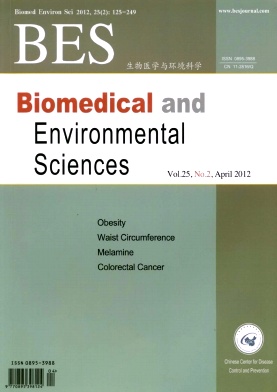Contamination of Live Virus during Tissue Homogenizing by Ultrasonic Processor and Tissue Disperser
doi: 10.3967/0895-3988.2012.02.007
-
Key words:
- Splash /
- LAIs /
- Homogenize
Abstract: Objective To quantitatively evaluate the contamination area and risk of a live pathogen during tissue homogenization by either ultrasonic processor or tissue disperser.Methods A recombinant Herpes Simplex Virus (rHSV) containing GFP gene was used as the index virus,and fresh liver tissue from healthy mice was used as simulated specimen.After 10% liver homogenate was mixed with rHSV (100 TCID50/0.1 mL) in a 5 mL tube,the stability of rHSV in liver homogenate and influences of an ultrasonic processor and a tissue disperser on viral infectivity were determined by GFP expressions in cell cultures.The contaminating areas of live viruses during homogenization were evaluated by a cell culture-based sedimentary.The contamination radii were counted by measurement of the distance between the operator and the farthest GFP positive well.Results The infectivity of rHSV in 10% liver homogenate maintained almost unchanged after it was incubated at room temperature for 30 min.Treatment with an ultrasonic processor clearly dropped down the virus infectivity,while a disperser not.Obvious spills and slashes of live viruses were observed in processes of homogenization with those two apparatuses,The contamination radii are positively related with sample volume,output energy of operator and handling time.Conclusion Homogenizing infectious samples with an ultrasonic processor and a tissue disperser at commonly used conditions caused obvious spills and splashes of live viruses,which possesses high risk to induce Laboratory acquired infections (LAIs).
| Citation: | SONG Juan, ZHOU Wei, WANG Ying, CUI Yu, HUANG Xiao Xia, ZHANG Bao Yun, WU Gui Zhen, HAN Jun, DONG Xiao Ping. Contamination of Live Virus during Tissue Homogenizing by Ultrasonic Processor and Tissue Disperser[J]. Biomedical and Environmental Sciences, 2012, 25(2): 167-171. doi: 10.3967/0895-3988.2012.02.007 |







 Quick Links
Quick Links
 DownLoad:
DownLoad: